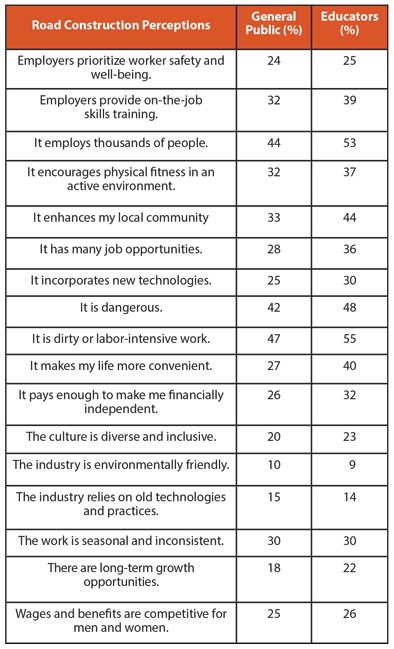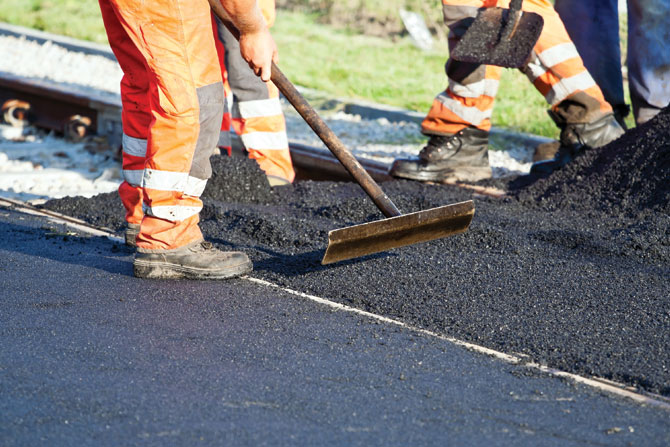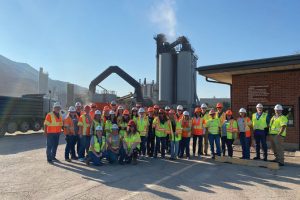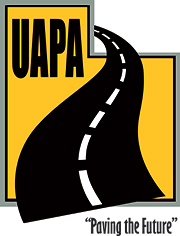Unemployment in August 2020 was high: according to Statistica, 13.54 million people were looking for jobs. August 2021 was better because by then, Statistica only listed 8.38 million unemployed people.
With such large numbers, it’s easy to think there is no shortage of people to hire, but the pandemic recession hasn’t changed the need to find, train and retain new workers in the asphalt industry. The shutdown worsened everything because many workers who lost their jobs, especially people with extensive work experience, decided to retire or change industries. Unemployment statistics don’t count the people who retired.
A pre-pandemic 2019 survey found that even though 91% of road construction companies wanted to hire, more than 80% had difficulty finding suitable candidates. Please note, the survey included unionized and nonunionized companies. The employee shortage delays projects and makes companies hesitant to bid on new contracts.
The shortage doesn’t mean you won’t find people to hire, but the process might be more challenging than you would like, and it makes sense to encourage employees to stay as long as possible. Investing in your workforce will benefit your company during good times and bad. When your company is prospering and everything is going well, making it clear how much you value your employees encourages them to build a career with you. Downturns are an opportunity to build loyalty, too; people don’t forget it when they know you could have cut their job and didn’t.
At the same time, one of your jobs is to determine which employees are valuable and whether any employees drain the organization. If you can help someone become more productive, that’s great. But if you don’t succeed, you are doing them and the company a favor by letting them find a better job somewhere else.
Part of the problem is that people don’t have a good understanding of the industry. They see workers dressed in long pants and safety vests pouring hot asphalt on a hot day while surrounded by backed-up traffic. The work looks difficult, dangerous and uncomfortable. No wonder it’s hard to find employees if they think the work consists of that and nothing else.
One survey asked respondents about their familiarity with six industries with the same general labor profile: manufacturing, construction, transportation, agriculture, road construction, and mining. The respondents were divided into two categories, members of the general public and educators. Road construction was in fifth place compared to the others. Results for road construction are outlined in the following table.

Perceptions changed after they learned more about road construction. For the general public:
- The familiarity and net favorability increased 15%, from 58% to 73%.
- The likelihood of recommending the industry increased 20%, from 40% to 60%.
- The likelihood of personally considering a job increased 17%, from 26% to 43%.
For educators:
- Net favorability increased 14%, from 68% to 82%.
- The likelihood of recommending the industry for jobs increased 19%, from 51% to 70%.
The truth is that building roads requires skilled work, specialized knowledge and expertise. In addition to road construction workers, there are opportunities to operate equipment and maintain roads. The industry provides jobs for accountants, engineers, IT professionals, managers, sales and marketing professionals, and others. People are treated fairly and paid well. Salary and benefits are good enough to build a good life and save for the future. The road construction industry is closer to achieving equal pay for men and women than most. Crews often develop strong, positive social ties with each other.
Can the work be difficult and physically demanding? Yes, but that is true in many other industries that don’t struggle to fill jobs. New equipment and techniques have done a great deal to make the work easier than it used to be. Safety is as important in this industry as it is in any other, and companies that have successfully created and maintained a safe working environment for their employees are proud of their accomplishments, as they should be.

In short, the benefits of working to build roads are a well-kept secret. It’s time to end that. Road construction companies can improve their ability to attract and retain employees if they can get the message out about the reality of working in the industry.
Educators can play a much larger role in teaching students about the opportunities available to them. Companies should make a point of doing what colleges do and start visiting high schools two or three times a year. If the only message students get is that they ought to go to college, it’s a no-brainer what they are likely to do after getting their high school diploma. Infrastructure jobs, like road construction, ought to be a compelling alternative to a four-year degree that has a fat price tag attached. Is a college education important? Yes, absolutely. But everyone’s situation is different, and a college education does not always pass the test when you consider the return on investment.
What else can companies do to educate people about road construction opportunities? Look at television, online news sites and social media. Target the most likely media to reach people; for example, if you want to reach a younger audience, such as Generation Z (1997-2012), look at Instagram, Snapchat, and TikTok.
What are some ways you can keep employees committed to their work?
- Skilled workers are hard to find, so value the employees you already have. Do what you can to ensure they are happy in their jobs.
- Show active appreciation for the work being done. After all, building and maintaining roads is important. It improves the quality of life for everyone.
- Write schedules in advance and rotate less desirable shifts, like the night shift. People need to know as soon as possible when they will have a day off, and crews also appreciate knowing they won’t be stuck on a bad shift forever.
- Give new employees some time to acclimate to the work they’ll be doing. For the first week or two, have new employees watch safety videos and meet with people to get acquainted. This introductory time gives you a chance to educate them about expectations and help them be invested in what they will be doing from the very beginning.
- Check up on new hires regularly after they start working. For example, see how they are doing after 30, 60 and 90 days. Ask them whether they are getting enough training. Make sure their benefits have been set up correctly. Schedule regular training sessions about industry trends and equipment, too, so employees stay current. Ensure they know about any career-growth opportunities you offer.
- Invest in leadership education for supervisors a minimum of once a year.
Even though the obvious solution for a workforce shortage is to recruit more people, retention still matters because the long-term solution is to ensure those recruits are happy.
Even though the obvious solution for a workforce shortage is to recruit more people, retention still matters because the long-term solution is to ensure those recruits are happy. As a result, companies that retain their employees have a definite advantage over less-savvy competitors because constant turnover is expensive.
Many problems are outside your control, but you can create a good workplace environment. Take advantage of that fact. Your business will be much more likely to thrive if you do.








